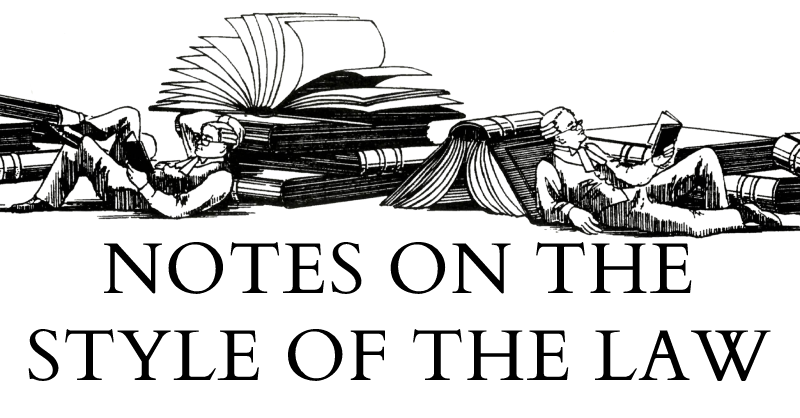


Reviewed
Strategic Legal Writing by Donald N Zillman & Evan J Roth
Cambridge, 212 pp, £28.99, US$37.99 (paperback)
Writing a book on legal writing, as opposed to simply an anthology of good legal writing, is a tricky task. How can one convey the sublime, the practical, the elegance, the precision required in good legal writing by description? A number of approaches are thus used in teaching legal writing. When reading this 2008 book, now freely available for those with academic access as one of the few legal writing titles on the ‘Cambridge Core’ service, I had to constantly remind myself that the authors had not elected to choose any of the methods which I would have preferred. This book, in spite of the title and occasional pæans to the importance of ‘strategic’ writing, is not a thesis about a new or innovative way of perceiving legal writing. Strategic writing is no more than keeping in mind the goal of the particular legal filing, which is sensible and necessary, but hardly revelatory. Instead, it is the distillation of the course the authors teach at the University of Maine at Presque Isle, consisting mostly of a series of exercises with accompanying fictional papers.
Each exercise is preceded with a number of considerations, as well as some in-universe ‘instructions’ setting out the task. The exercises jump around various fictional and real settings, One of which is the fictional ‘University of Katahdin’, meaning that, confusingly, the book is replete with references to the UK which have nothing to do with Britain. with the brief commentary and suggestions for revision on them reserved for the back of the book. This itself is annoying—it would have been more useful to have these discursive sections on the exercises placed after each exercise, so that one did not have to jump around pages after completing them. The actual exercises require, in accordance with good teaching practice, a variety of skills, from criminal filings to actions for replevin. I was bemused to learn replevin still exists in the United States!
The book’s format suggests that the course the authors teach is probably a very good one. Yet, as a tool for self-study, this fails. A seminar class in legal writing requires discussion, feedback, engagement both with one’s peers and one’s instructors. The open exploration of writing exercises can only be useful when one is able to iterate and improve with each one. The sparse commentary and instruction in this book would be fine if one could pop into office hours or read one’s exercises out loud in class, but stripped of those things, it feels a bit useless. It is because of this that the classics of the legal writing genre, perhaps most notably Garner’s Element’s of Legal Style, take a more didactic approach, stating with authority basic premises of good legal writing which the student can then use as a benchmark as she grows as a legal writer.
By contrast, the actual instruction in this book is either so specific (concerning headings in pleadings, say) or so general as to be of little use in developing as a legal writer. Occasionally, it strays into dangerously overly broad. The authors tell us without qualification that ‘the most persuasive legal writing emphasises facts, not law.’ Cleaned up. This may be true in some circumstances, but in many cases, emphasising the law can be more persuasive than facts. At other times, it can be useful but too brief: the discussion on the use of length in a complaint as a tool of legal strategy is insightful but takes up only a few sentences. In a few cases, the exposition is simply well done, as with the authors’ example of how opponents can turn turn a pleader’s words against her. Equally, the authors are quite right to remind writing students to use appellations consistently (so either ‘Mr Blaustein’ or ‘the donor’ rather than mixing the two throughout a filing). This mixture can be frustrating, because we are shown just enough wisdom to see that the authors clearly understand legal writing well, but not so much as to be of serious use.
This is unlikely to matter to most readers, but the book also has a truly abysmal index, one of the worse and most inconsistent I have encountered in a legal book for some time.
Normally, I would be content to let a legal book from 2008 rest in peace. However, given that many students and teachers of legal writing are likely to search Cambridge Core for freely accessible texts on the subject, there is value in highlighting which texts are useful, and which are not. On balance, this brief tome is probably not useful except as a source of self-directed exercises to be used in accompaniment with other, more instructional texts.

© , Elijah Granet, but licensed to all under the terms of Creative Commons licence CC-BY-SA 4.0
Published by

GRANET PRESS
LIMITED



Comments
Post a Comment
Contributions are always welcome!